Male Pattern Baldness: Causes, Stages & Treatment
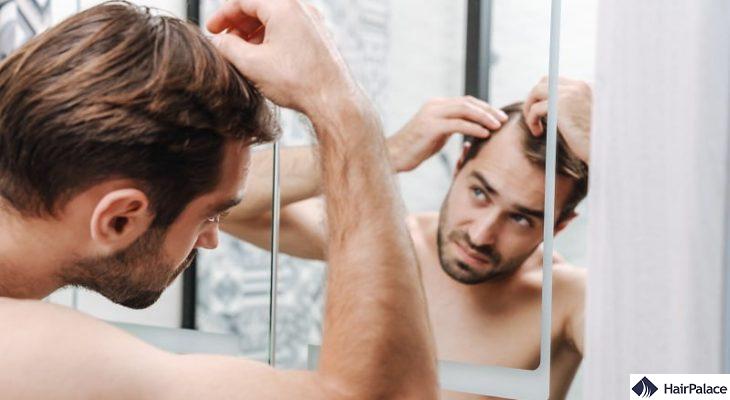
Male pattern baldness, also known as androgenetic alopecia, is the most common hair loss condition characterized by a receding hairline and thinning of hair on the crown.
It is caused by genetic factors and the hormone dihydrotestosterone (DHT), which shrinks hair follicles over time.
Treatment options include medications like minoxidil and finasteride, hair transplant surgery, and lifestyle changes to manage and slow the progression of hair loss.
Today, we’ll explore everything you need to know about male pattern baldness, from the potential causes to the stages of hair loss, to what treatments are available for you to consider, and more.
- What is male pattern baldness?
- What causes male pattern baldness?
- When does it start?
- What are the signs?
- What are the stages?
- Treatment options available
What is male pattern baldness?
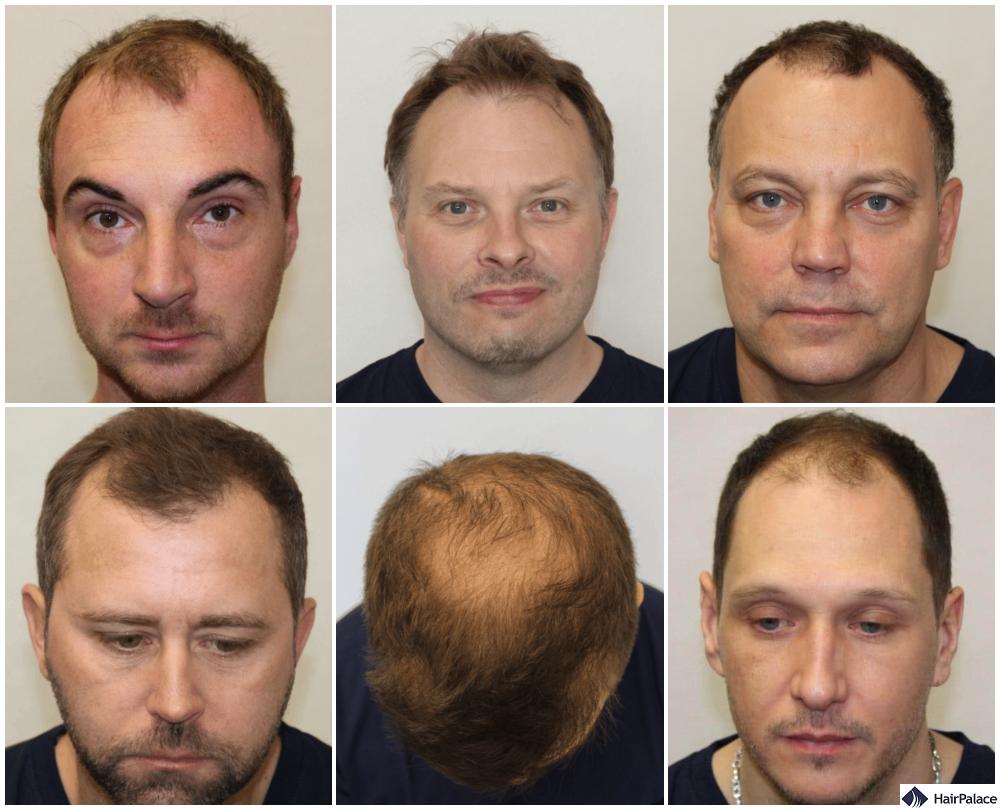
Androgenic alopecia, is a genetic condition. Initially, it forms a receding hairline, but in time, the hair loss forms a ‘V shape’ on the crown of the head.
The results of male pattern baldness can be extreme, robbing most of the scalp of hair.
Two locations on our scalp, the back, and sides of the head are immune to the condition.
There are different degrees of pattern baldness. The Norwood scale is a helpful way of diagnosing the current state of hair loss you are in.
It has seven stages, each with visual diagrams and explanations. Doctors use this scale to diagnose a person’s condition and plan potential treatments.
What causes male pattern baldness?
The main cause of male pattern baldness is the conversion of the hormone testosterone into dihydrotestosterone, otherwise known as DHT.
The enzyme 5-alpha-reductase converts inactive testosterone into DHT, which promotes male features, including the development of the prostrate, body, and facial hair growth, and sadly, male hair loss.
Why does it cause the condition?
DHT is much more powerful than testosterone. It also attaches to cells easier and lasts longer.
When it comes in contact with follicles, it shortens the hair growth cycle. This leads to hairs growing much shorter than normal.
Over time, the growing phase is reduced to such a degree that hair barely grows across the skin’s surface. Those that do grow may fall out easily.
DHT is essential for all other types of hair growth around the body. But it causes hair loss in the scalp – a phenomenon and mystery scientists are still trying to explain why.
When does male pattern baldness start?
| Age | Percentage of men with noticable hair loss | |||
|---|---|---|---|---|
| 20 | 20% | |||
| 30 | 25% | |||
| 50 | 50% | |||
| 60 | 66% |
Androgenetic alopecia, or male and female pattern hair loss can start affecting men and women of all ages.
Most sufferers notice the early start of hair loss in their twenties, with up to 20% of men reporting gradual thinning in these early years.
Because your 20s are such a pivotal time in your life, any form of hair loss can be simply devastating.
Sadly, by the time these men reach their 30s, there’s an increased change (25%) of noticeable baldness.
By age 50, over half of the men have reported noticeable hair loss.
This increases to 66% by the time they reach 60, with men either having bald, patchy hair, or thinning hairlines.
While we commonly associate losing hair with getting older, that doesn’t make it any easier.
After all, hair has always been a symbol of manliness, and when you lose hair, your self-confidence and self-esteem can fall.
And no matter your age, you understandably want to look your best. When hair falls out, it can be incredibly distressing.
But no matter what age stage of hair loss you are in, there is a hair loss treatment out there that can help your symptoms.
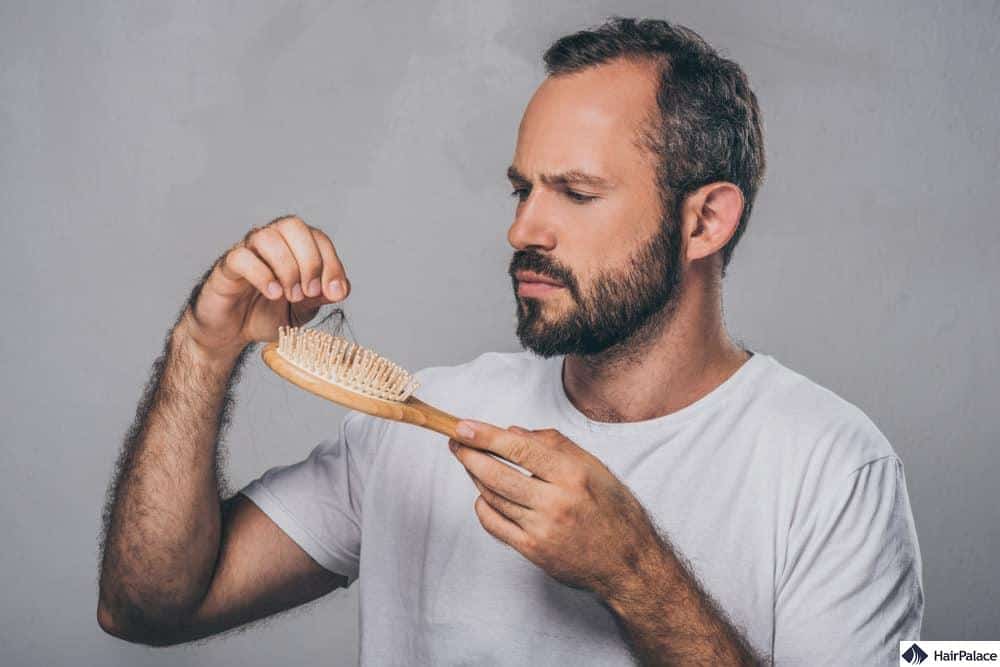
What are the signs of male pattern hair loss?
The condition typically starts at your hairline. It will gradually recede, forming an ‘M’ shape at the top of your head.
Another area often affected early on is the back of your head, near the top.
This often thins and expands gradually over time.
Over time, the hair on top of your scalp will become finer, shorter, and thinner.
It will form a ‘U-shape’ pattern and may look brittle or even fall out quicker than you’d expect.
IF you suspect that you’re suffering fro hair loss it’s best to consult with a doctor to get an accurate male pattern baldness diagnosis.
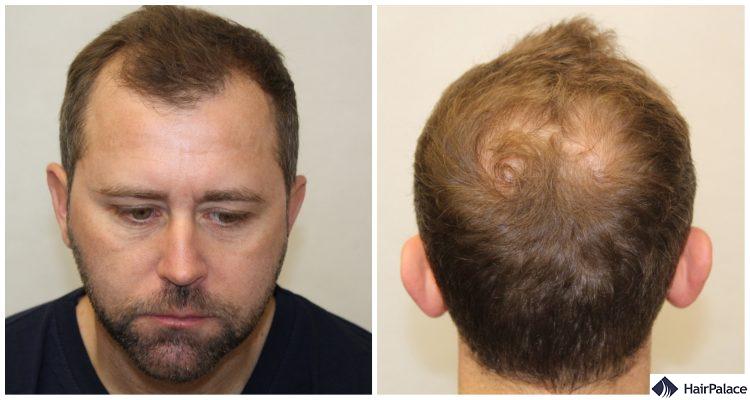
Male pattern baldness stages
Specialists often use the Norwood male pattern baldness scale to mark the progress of hair loss in men and women.
There are 7 different types of male pattern baldness stages to be mindful of:
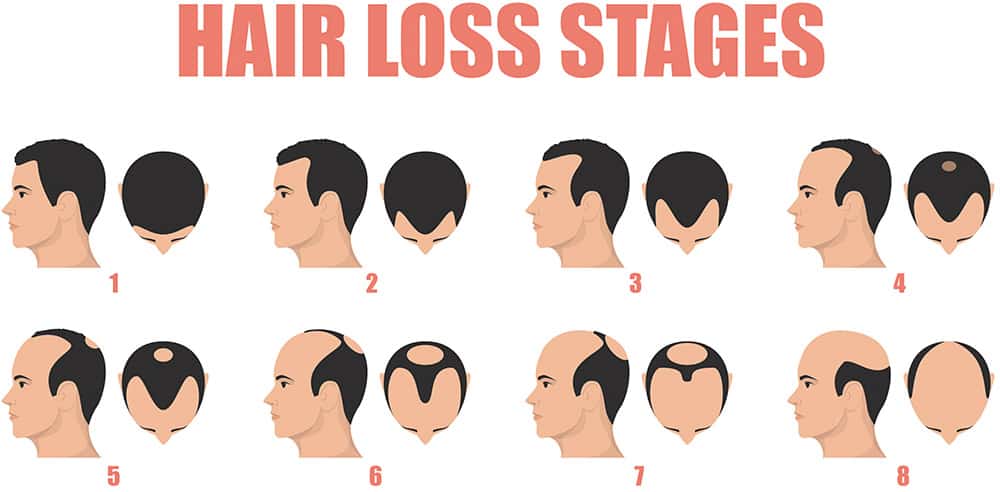
Is pattern baldness genetic?
We all know that old wive’s tale that men inherit baldness from their mother’s father. But is it all really down to lousy genetics and family history?
Research has shown that more than 80% of people experiencing balding have a father who also lost his hair.
This evidence shows at least some evidence to support the theory of hereditary hair loss.
Scientists are still working to uncover the answers as to what genetic factors cause this type of hair loss.
We can safely say that most scientists think the problem is polygenic, which involves more than one gene.
A study in 2017 on genes found that up to 63 genes could potentially play a role in developing the condition.
Some genes, like the AR gene, were highlighted as solid indicators of hair loss.
Another fascinating study examining twins concluded that genetics accounts for up to 80% of male pattern baldness.
But there is still so much we need to learn about why this condition happens in the first place.
While we may joke about inheriting patchy hair loss from our parents, it could very well be true!
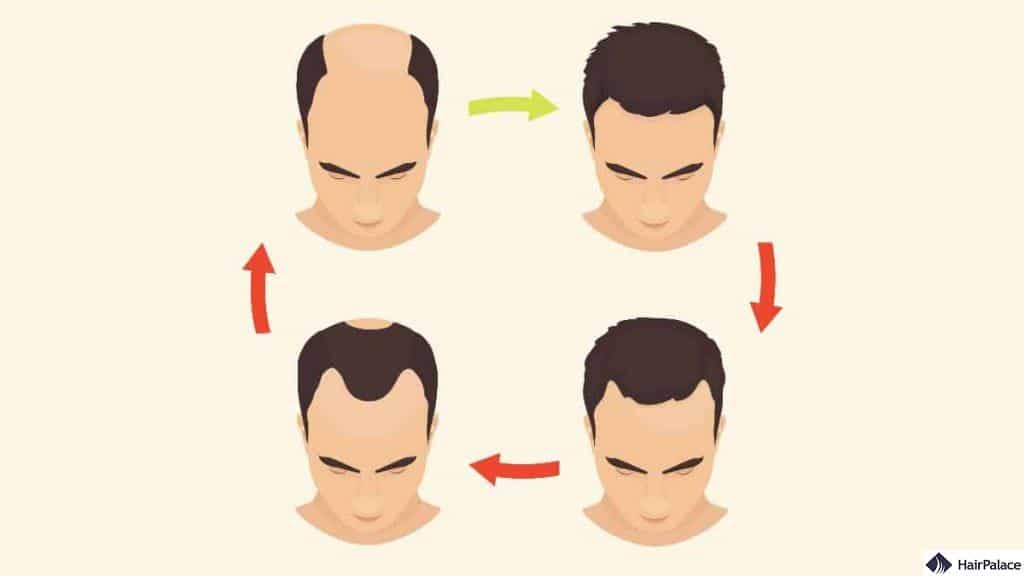
Latest treatment for male pattern baldness
Any hair shed from male pattern hair loss will sadly never grow back.
This is due to the hormone DHT, which is the root cause of why a hair follicle shrinks permanently.
For this reason, we highly recommend early treatment as a preventative measure.
While there is no definitive cure for male baldness, several hair loss treatments can help alleviate symptoms.
The most popular solutions to male pattern baldness include:
- Finasteride
- Minoxidil (Rogaine)
- Platelet-rich plasma (PRP)
- Laser treatment:
- Male pattern baldness hair transplant
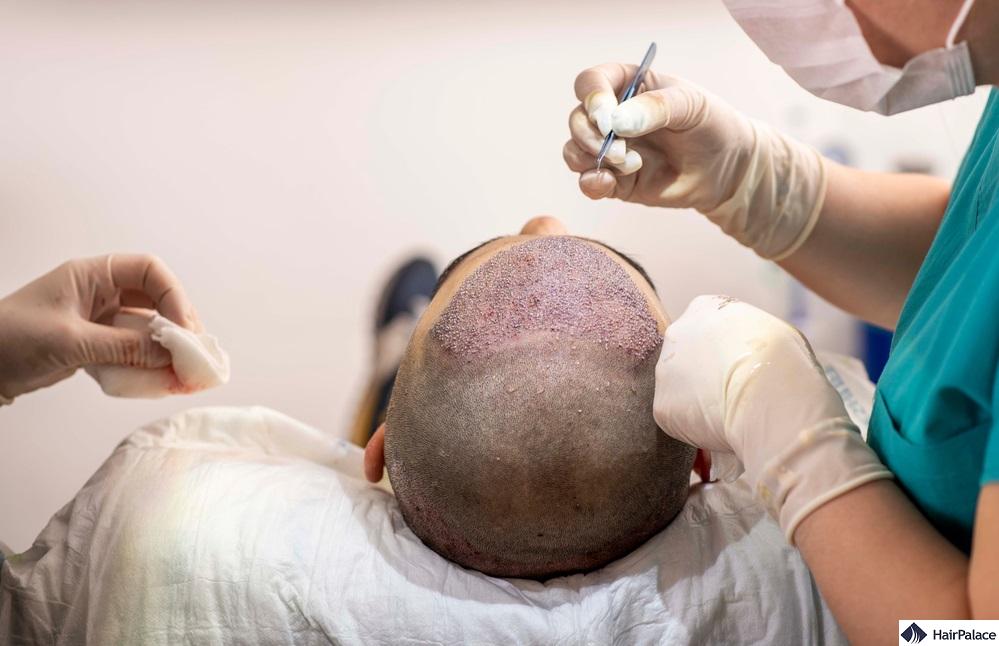
Male Pattern Baldness FAQ
Hair won’t grow back when it falls out because of male pattern baldness. This condition is identifiable by a heavily receded hairline and thinning crown, progressing gradually over the years. However, hair will still grow at the back of the scalp and above the ears.
No cure for this condition is available at present, though medications such as minoxidil and finasteride can help combat hair loss. They may also regrow hair lost due to various causes.
Take the following steps to fight hair loss:
● Take vitamins and minerals, such as vitamins B7 (biotin), D, C, and iron.
● Use mild shampoo to wash your hair gently.
● Massage your scalp with essential oils to improve circulation.
● Eat more protein — one of the building blocks of hair.
● Massage green tea into your hair, which can improve hair growth.
● Drink at least eight glasses of water per day to stay hydrated.
● Never brush your hair while it’s wet.
It never stops naturally. If you’re unhappy with your hair loss, you may consider treatment (such as a hair transplant).
Androgenetic alopecia, typically begins between the ages of 20 and 30, but it can start as early as the late teens for some men.
It’s a genetic condition that can be inherited from either the mother’s or father’s side.
Stress can potentially accelerate hair loss in individuals who are genetically predisposed to the condition. Stress can lead to a temporary increase in hair shedding, known as telogen effluvium, which might hasten the onset or progression of hair loss in those already susceptible to male pattern baldness.
Hair transplantation is the most effective way to treat male pattern baldness. It’s also the only treatment that gives a permanent solution to the problem.
Smoking does not directly cause hair loss, but it can contribute to hair loss and may exacerbate the condition due to its negative impact on circulation and damage to hair follicles.
Male pattern baldness can begin as early as the teenage years, though it more commonly starts in a man’s 20s and 30s.
Last medically reviewed on July 15th, 2024
- Male pattern hair loss: current understanding by David A. Whiting, MDhttp://www.hairlosssucks.com/download/whiting.pdf
- Rathnayake D, et al. Male androgenetic alopecia. 2010https://www.tandfonline.com/doi/full/10.1517/14656561003752730
- Hamilton J.B. Male pattern hair loss in man. Ann NY Acad Sci. 1951; 53: 708-728https://www.cidjournal.com/article/S0738-081X(00)00128-0/fulltext
- Vera H. Price. Treatment of Hair Loss. N Engl J Med 1999; 341:964-973.https://www.nejm.org/doi/10.1056/NEJM199909233411307

